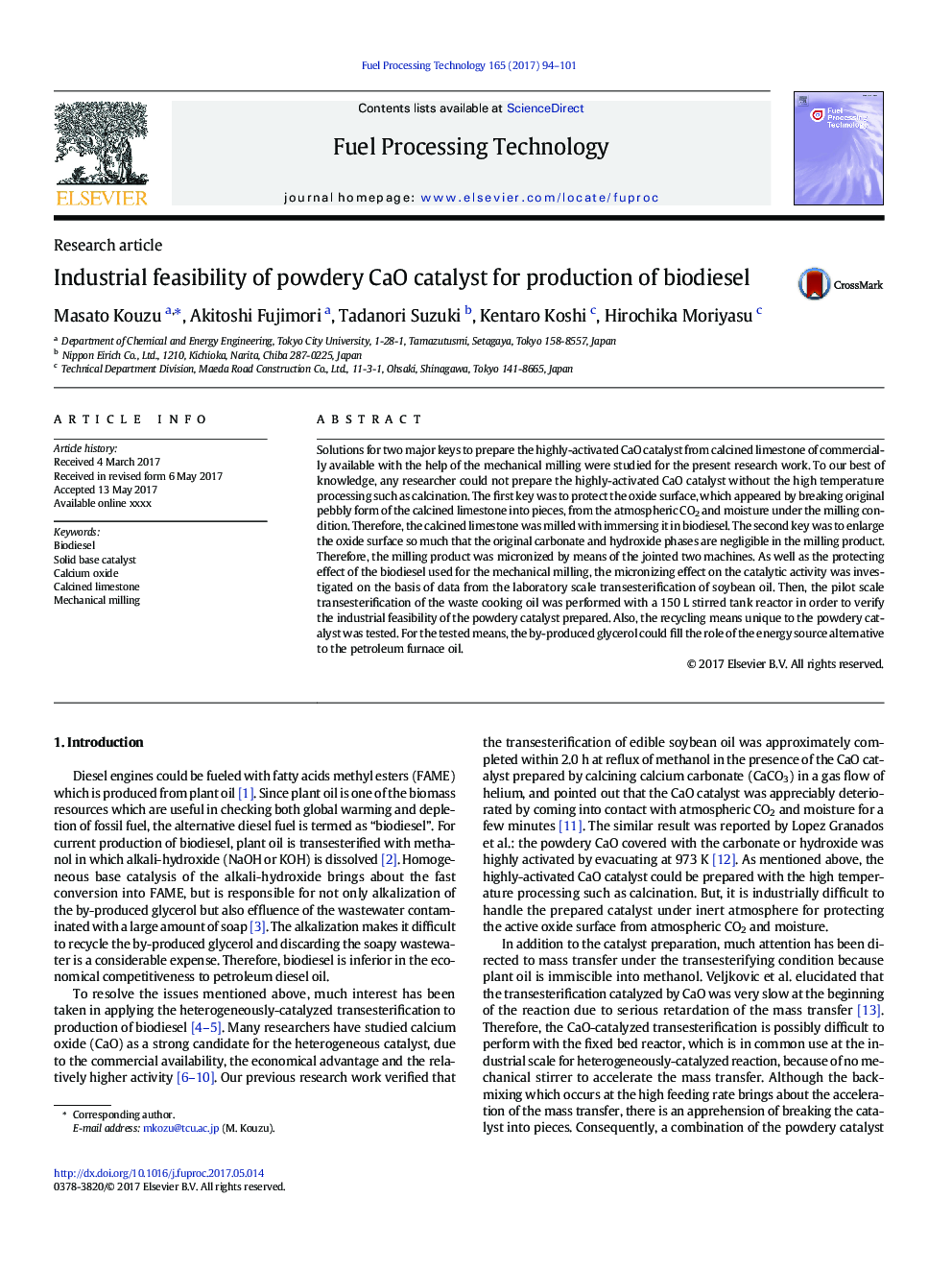| Article ID | Journal | Published Year | Pages | File Type |
|---|---|---|---|---|
| 4768893 | Fuel Processing Technology | 2017 | 8 Pages |
Abstract
Solutions for two major keys to prepare the highly-activated CaO catalyst from calcined limestone of commercially available with the help of the mechanical milling were studied for the present research work. To our best of knowledge, any researcher could not prepare the highly-activated CaO catalyst without the high temperature processing such as calcination. The first key was to protect the oxide surface, which appeared by breaking original pebbly form of the calcined limestone into pieces, from the atmospheric CO2 and moisture under the milling condition. Therefore, the calcined limestone was milled with immersing it in biodiesel. The second key was to enlarge the oxide surface so much that the original carbonate and hydroxide phases are negligible in the milling product. Therefore, the milling product was micronized by means of the jointed two machines. As well as the protecting effect of the biodiesel used for the mechanical milling, the micronizing effect on the catalytic activity was investigated on the basis of data from the laboratory scale transesterification of soybean oil. Then, the pilot scale transesterification of the waste cooking oil was performed with a 150Â L stirred tank reactor in order to verify the industrial feasibility of the powdery catalyst prepared. Also, the recycling means unique to the powdery catalyst was tested. For the tested means, the by-produced glycerol could fill the role of the energy source alternative to the petroleum furnace oil.
Related Topics
Physical Sciences and Engineering
Chemical Engineering
Chemical Engineering (General)
Authors
Masato Kouzu, Akitoshi Fujimori, Tadanori Suzuki, Kentaro Koshi, Hirochika Moriyasu,
